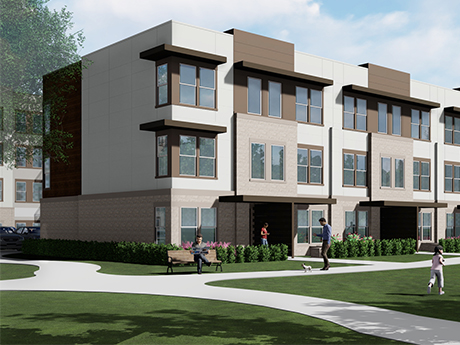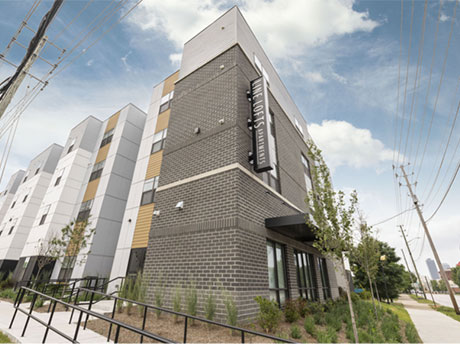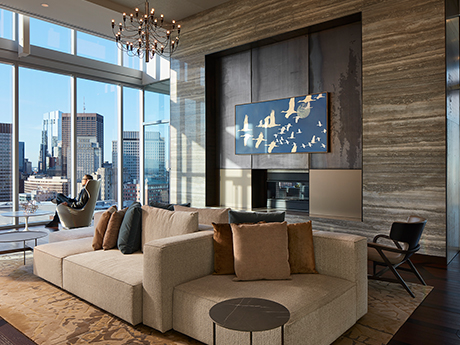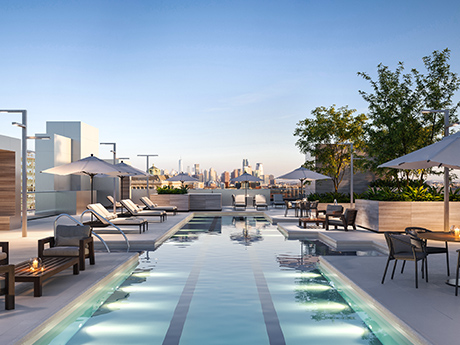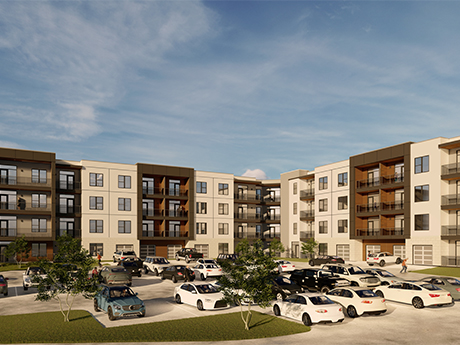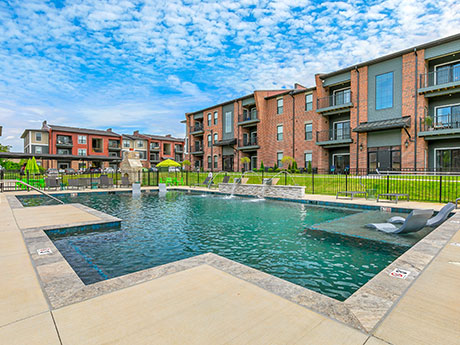By Tim Harris, vice president of multifamily development, Rosewood Property Co. San Antonio’s multifamily market is realizing its own potential. New nodes of development are emerging, and new projects are meeting pent-up demand for higher-quality renter experiences. Today, developers are building multifamily projects that they wouldn’t have considered five or 10 years ago. They’re no longer stuck in their comfort zones, afraid to venture into new submarkets. And they’re no longer worried that they won’t be rewarded with the rents necessary to provide differentiated properties with unit diversification, higher-end finishes and increased amenities. History, Affordability Historically, many institutional investors and national developers have overlooked San Antonio. Bigger and trendier Texas cities — Austin, Dallas-Fort Worth and Houston — have always overshadowed the Alamo City. That wasn’t always the case, though. In 1860, San Antonio was the largest city in the Lone Star State. It thrived as a center for the cattle industry until the 1930s, when its population fell behind that of Houston and Dallas, mostly because of the booming oil industry. Today, San Antonio’s metro area is the 25th-largest in the country with 2.6 million residents, according to Oxford Economics. Hispanics represent 55.1 percent of the population — the …
Multifamily
The United States has been experiencing a housing crisis for years, one that is perpetuated by the COVID-19 pandemic. Whether it’s a lack of affordable housing properties for low-income families, a steady increase in housing prices over the years or exponentially high demand for new homes, the U.S. housing market within the past decade has been a wild ride. Indianapolis growth In the heart of Indiana, we’re seeing a hopeful trend. Indianapolis (Indy) was ranked as the fourth best housing market positioned for growth in 2022. A variety of factors could contribute to this distinction. For one, Indy is a thriving city and centrally located — not just within the state, but in the U.S. It’s home to two professional sports teams, and recently named one of the best cities for creating tech jobs by Forbes, with Fortune 500 corporations like Eli Lilly and Salesforce headquartered throughout the vibrant downtown. Marquee universities such as IUPUI, Butler and IU Medical School also bring more jobs into the fold. The 2020 Census found that metropolitan areas like Indianapolis are at the forefront of the state’s growth. Marion County remains the most densely populated county with more than 950,000 residents. Currently, the average …
By Clara Wineberg, principal and executive director, SCB Boston As we have all been forced to reexamine how we interact with and live in our homes during two years of a global pandemic, lessons learned for architects, developers and interior designers have been bountiful. In early 2020, those of us in the multifamily industry were wary about how we would make it all work; now, however, we realize the challenges we have faced in the last 24 months have provided immense opportunities to improve design of modern housing communities. In 2022 and beyond, multifamily design will continue to evolve to meet the changing definition of “home,” and how it connects us to our loved ones, communities and even ourselves. Everything From Home While home used to be just a place to hang one’s hat at the end of the day, in 2020, home took on a whole new meaning. It became not only the place we rest, but also our workplace, our children’s classroom, our fitness center and our entertainment venue. Our whole lives were — and to some extent still are — encapsulated within our homes. We expect this trend to continue moving into the future post-pandemic world. The …
By Taylor Williams Northern New Jersey is teeming with new multifamily projects, many of them transit-oriented, that mesh suburban locations with urban lifestyles, making the region a desirable alternative to living in New York City. But more housing product is unquestionably needed. According to the U.S. Census Bureau, the Garden State’s population grew by 5.7 percent from approximately 8.8 million to 9.3 million in 2020. New Jersey is the 11th-most populous state and the fifth-smallest state by area, and thus has the highest level of population density in the country. The combination of a growing population and a very limited supply of land means that infill development sites that provide direct access to major cities, most notably New York City and Philadelphia, are highly coveted by developers of all property types. But developers that can deliver the right kind of housing on those sites play central roles in helping municipal leaders bring new jobs, retailers and restaurants to their communities. CENTURION Union Center, a mixed-use project which includes nearly 300 new homes and approximately 27,000 square feet of retail space, is just one such project that ties together a basic need for housing with a larger revitalization of the community. …
By John Griggs, co-founder, co-CEO, Presidium Everything is bigger in Texas, including the opportunity for apartment investment, development and absorption — and the nation is catching on. In 2021, Dallas-Fort Worth (DFW) again led the country in the number of multifamily units delivered, adding more than 20,000 new residences for the fourth year in a row. With the thriving economy, lower taxes, central location and an influx of people moving to the area via natural net migration and corporate relocations, it’s not surprising that the demand for apartment units is at an all-time high. A study from RealPage reported that the issuance of North Texas apartment building permits saw a 27 percent uptick in the 12-month period between September 2020 and 2021, one of the heftiest increases among the 10 largest U.S. markets. While the hyper growth the DFW area is experiencing is a positive thing, it’s shaping the economic landscape so rapidly that developers have to adapt efficiently and effectively. Supply chain issues and production bottlenecks are further complicating this equation. Desirability Brings Demand A clear benefit for us in the current North Texas real estate industry is that population, job opportunities and incomes are surging. The flood of …
Fueled by a trifecta of favorable cap rates, an underserved apartment market and sharp increases in market demand, St. Louis is starting to gain momentum with the potential to become a new multifamily hotspot. As investors and developers take note, capital that typically has been focused in higher growth markets on the coast and cities like Chicago and Nashville is starting to flow into the Gateway City. The fruit of these investments is now coming to market. Despite 20-plus percent increases in construction costs, 24 percent more units — 2,057 total — were built in 2021 compared with St. Louis’ five-year annual average. Nearly 4,000 additional units are under construction in the St. Louis region. Population, personal income and job growth are the key economic drivers of multifamily unit demand. In 2020 and 2021, all three of those markers are finishing on the upside in St. Louis after pandemic dips. Employment growth is particularly promising. After slight employment declines over the last five years, St. Louis employment has grown at an average annual rate of 2.7 percent for the last four quarters. CBRE forecasts positive growth of 2 percent for the next two years and 0.8 percent for the next …
By Gary Holloway Jr, president, GMH Communities The COVID-19 pandemic served as an accelerator for transforming the Philadelphia multifamily market. Overnight, property owners and managers had to quickly adapt and find new ways to serve their residents while prioritizing their safety and following all of the guidelines from the Centers for Disease Control and Prevention (CDC). As we head into 2022, the pandemic will continue to influence what prospective tenants expect from their apartment communities. Here are three opportunities that multifamily owners should consider as the industry continues to grow and evolve in Philadelphia. WFH is Here to Stay Working from home is not a new trend. However, the pandemic thrust countless residents into remote work situations without warning. This sudden shift in work routines has prompted multifamily developers to rethink which amenities they need to provide now that remote and hybrid work is the norm. At GMH Communities, we are actively growing our amenity offerings to enhance the work-from-home experience. At The Yards at Malvern, one of our newest properties that is located in the suburb of Malvern, residents have access to a robust business center with multiple small and large conference rooms with a Zoom conference room, …
Despite some disruption from COVID-19, Omaha’s multifamily market is resilient. It remains a healthy, stable market boasting sound fundamentals and continues to experience increasing demand for apartments. Multifamily, in general, has outperformed many other real estate sectors during the pandemic. Omaha’s multifamily occupancy remains strong and rent growth over the past 12 months has shown a positive overall trend. In construction, the market takes a measured approach with roughly 1,500 units per year on average. According to Reis, there are 384 units scheduled to be delivered throughout the remainder of 2021, while absorption is forecast to be more than 400 units, resulting in a 0.1 percent uptick in occupancy. Solid market fundamentals Both Omaha and nearby Lincoln, Nebraska, are seeing strong investment sales activity although limited assets are available. The market is predominantly controlled by local players, many of which build for their portfolios and operate the properties. However, some smaller players and out-of-town investors have found the timing was right to exit out of the market and sell. Out-of-state groups are aggressively entering these markets and paying significant premiums for available assets. Driving investment sales activity are low interest rates and better returns than these groups can find in …
By Taylor Williams For lenders and investors in New York City’s affordable housing market, accurately underwriting rent growth, operating costs and long-term asset appreciation can be a tricky proposition in today’s economic environment. To be fair, buyers and financiers of affordable housing properties in many U.S. markets are being forced to adjust and recalculate their metrics due to forces they can’t control. Yet macroeconomic factors like rising inflation, which puts heavy pressure on construction and operating costs, can often seem more acute in the Big Apple, where the cost of living and doing business is already higher than virtually anywhere else in the country. Economic Drivers The labor and materials costs for the renovations and rehabilitations that many affordable housing communities need are rising. According to Producer Price Index data supplied by the U.S. Bureau of Labor Statistics, for the month of August, the latest report available at the time of this writing, the aggregate cost of construction materials had risen by 19 percent from August 2019. Much of this rise in materials costs is due to disruption of the global supply chain via COVID-19, causing developers of much-needed housing stock to incur heftier budgets and longer construction timelines on …
If we consider that 2017 was the year that deconversion sales in Chicago began in earnest, we are now four years into the cycle. I’m frequently asked my opinion of how much longer this cycle will last, and what it will look like going forward. To me, that comes down mainly to supply and demand, with an eye on change in the relevant state and city statutes governing these sales. The supply of condominiums in Chicago is still plentiful, especially condominiums that were converted from apartment buildings. While there was a bit of a condo-buying frenzy in the early part of 2021 as the world opened back up, that frenzy has dissipated. Condominiums that would typically take a couple of months to sell sold in days, and often at asking price. With that said, there was little meaningful price appreciation. The factors that hinder appreciation of these condominiums did not change: high amounts of rental units in the association; lack of amenities; and aging buildings that are either behind on maintenance or expensive to keep up. Those factors are unlikely to ever change. The current demand for multifamily properties is quite strong. Most investors sat on the sidelines in 2020, …


